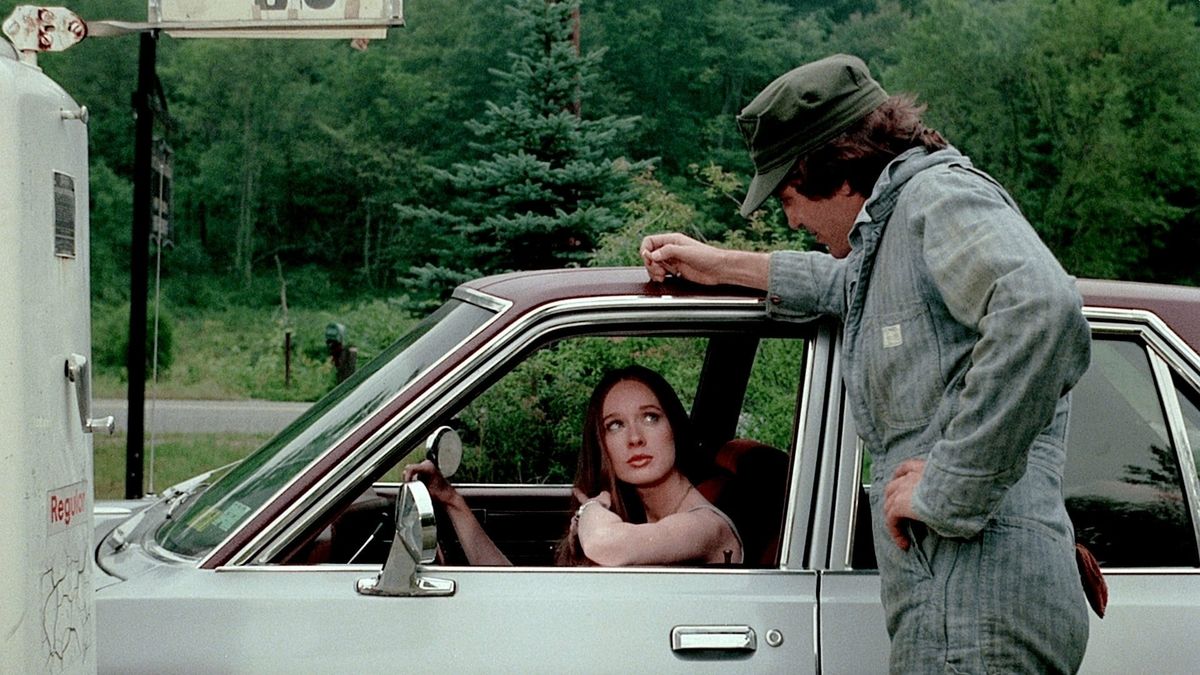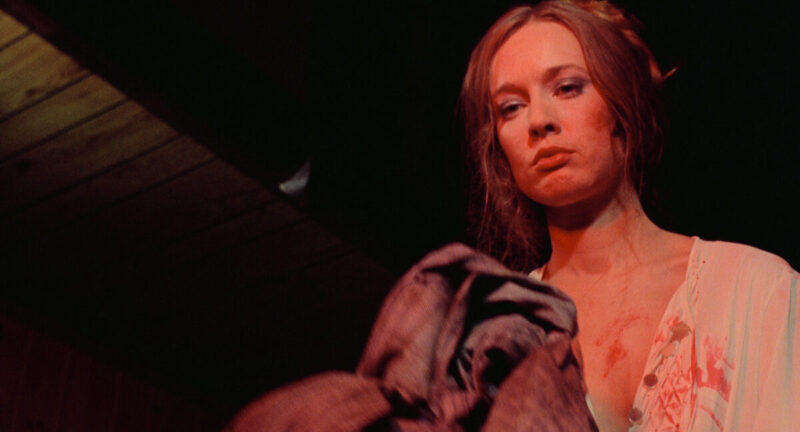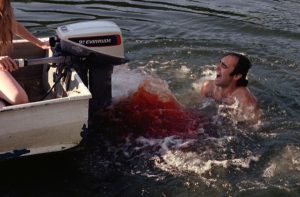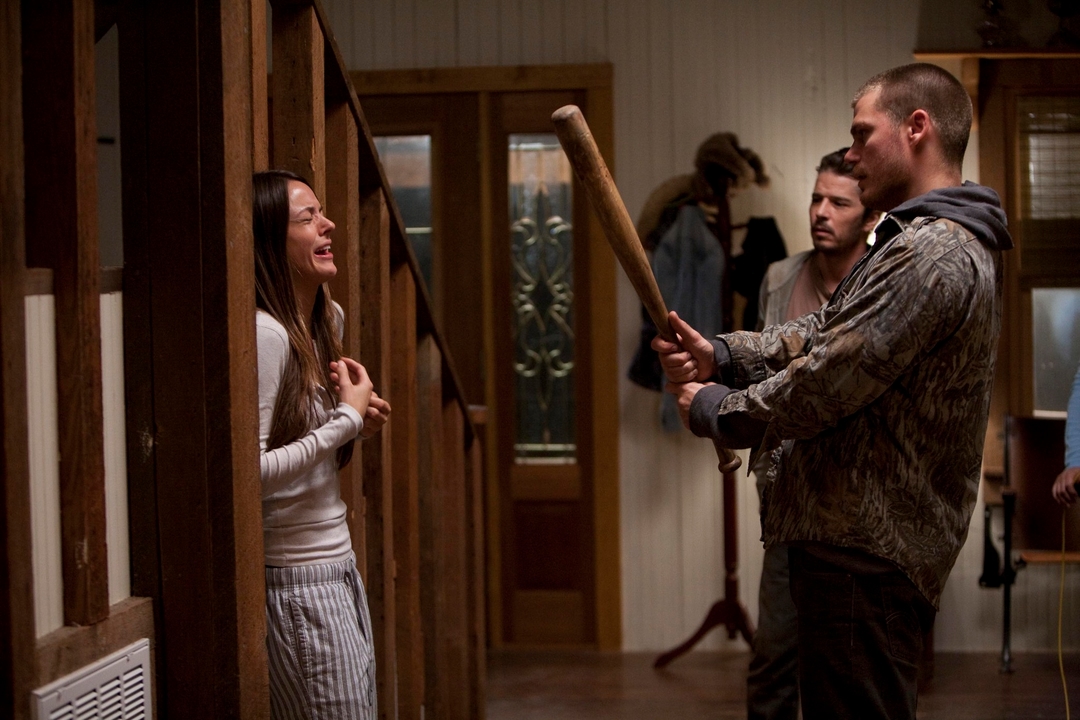"This woman has just cut, chopped, broken, and burned five men beyond recognition — but no jury in America would ever convict her!"

I Spit on Your Grave was considered so heinous, so ludicrously cruel, that it earned its spot as one of the most notorious video nasties that caused a tidal wave of commotion in Britain circa the 1980s. However, whilst it is now a celebrated classic and an iconic exploitation-revenge horror, Meir Zarchi's career-defining film is still radically controversial.

This quintessential genre film follows Jennifer Hills (Camille Keaton), a writer from the bustling borough of Manhattan, looking for some solitude to write her first book. Jennifer's rented cabin in the rural countryside proves quaint and peaceful until a local group of barbaric misfits line her up for the most disturbing fate. In what can only be described as the unholiest actions, the gang repeatedly assault her and leave her for dead. This simple revenge story is one that is now rather commonplace for many movies, particularly those on the darker side, and whilst this arc has been through its fair share of cinematic cycles, I Spit on Your Grave remains one of the chief instigators of this gruelling subgenre.
Despite the harrowing brutality of it all, I Spit on Your Grave has quite a bold backstory. It all started when filmmaker Zarchi came across a young woman who had been raped in a public New York park. Bloodied and stripped of her dignity, Zarchi helped the woman to the police station in hopes of justice. However, the officers nitpicked her statement by criticising her slurred speech, despite the fact that the attack had left her with a broken jaw and unable to speak. From this moment on Zarchi was compelled to tell a story of such great injustice with a horrific twist that many argue offers a warped sense of vengeance and a bold take on catharsis.

The film's venom-filled storyline helped infuse Jennifer's character arc with a level of brutality that oozed throughout the whole film, with I Spit on Your Grave's cinematic detailing offering covert signalling and interesting gazes that positioned the horror in a rather confrontational perspective. This aspect of antagonising the viewer and making them see the true horror of the crimes completely banished the video nasties' campaign claims, which included warnings that films such as I Spit on Your Grave were a sadistic "poison".

Even all of these years later, it's clear to see that I Spit on Your Grave is a far cry from tempting. For example, during Jennifer's mistreatment, the camera continuously shifts the lens to focus on the perpetrator's face at a low, flat angle as if the camera were taking on the victims position — the spectator becomes physically aligned with Jennifer with the assailant symbolically lying atop of the viewer. It is an assaultive and unforgiving lens that does not lend any prowess to Jennifer's situation. The audience is exploited, they are made to feel victimised. It's a horrifying fate that forces a reaction of gut-wrenching terror, it is undoubtedly dreadful. Zarchi's cinematic detailing abandons any suggestion that the film is titillating and encourages similar crimes. Alternatively, I Spit on Your Grave is so utterly cruel that it makes the viewer recoil in shock at the mere thought of such a reality.

And it's this exact reason as to why I Spit on Your Grave is considered a definitive example of classic horror cinema 45 years later. The harrowing scenes are far from influential, they are in fact so antagonistic that the very thought of it becoming a reality is sickening. Everything from the aforementioned cinematography to the commendable performance from Camille Keaton is what allows this 1970s triumph to be unforgettable. It's a brutal film that manages to stand the test of time and still inflict filmic wounds upon its audience.

I Spit on Your Grave was eventually given a DVD release with a sign-off from the BBFC in 2001, with the censorship officials enforcing necessary cuts to tone down the now-debunked eroticisation. In 2010, the organisation took another look and admitted that the cuts were overboard, yet they still concluded that nearly three minutes of edits were needed. Just three years ago in 2020, the board were brought back to the table to discuss the infamous film, and yet they still refused to officially release the entire uncut version in the UK.

Despite the rather rocky reputation that I Spit on Your Grave has obtained over time, the film has blossomed into a franchise, with the well-received remake hitting screens in 2010. Over the years, another three movies were made, all detailing the archetypal revenge storyline that Zarchi's original helped established. With the influx of vengeance horror's dominating a large part of the genre, it's essential that we must not forget its ancestry, including films such as The Last House on the Left (1972), Death Wish (1974), and I Spit on Your Grave (1978).
Want more top horror lists and reviews? Check out our blog here..
